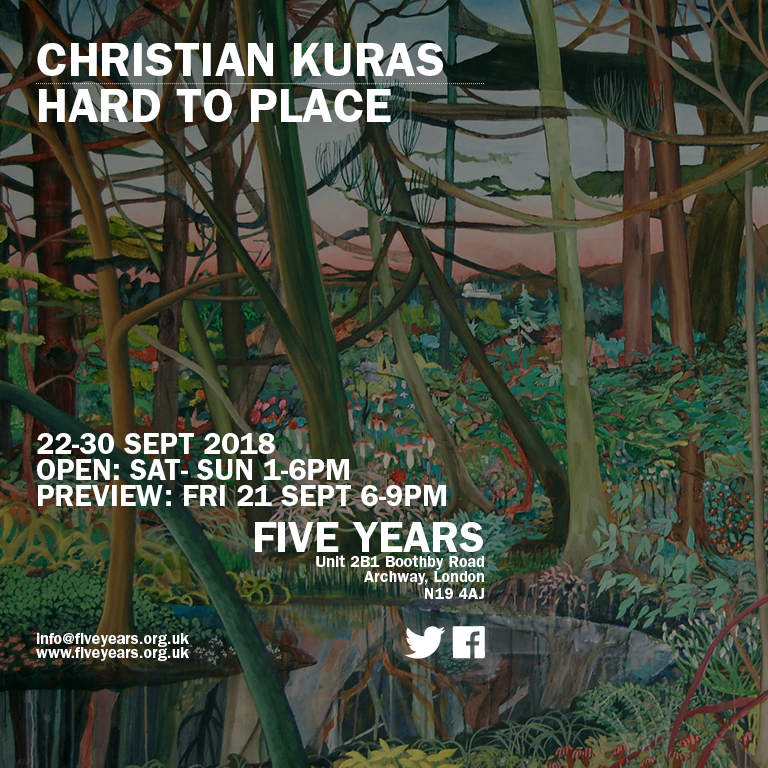
Christian Kuras is based in Manchester.
He studied at Emily Carr Institute in Vancouver Canada, and at Concordia University in Montreal Canada. In the past ten years he has worked extensively in collaboration with other artists in addition to his painting practice. As part of the collaborative duo Kuras & MacKenzie, he has exhibited regularly in the USA, Canada and Europe
----------------------------------------------------------------------------------------------------
FIVE YEARS
Unit 2B1 | Boothby Road | Archway, London | N19 4AJ
info@fiveyears.org.uk | www.fiveyears.org.uk | twitter | Facebook
Christian Kuras
Hard to Place22-30 September 2018
Open: Sat-Sun 1-6pm
Preview: Friday 21 September 6-9pm----------------------------------------------------------------------------------------------------
[…]
I mean, they’re paintings, for a start. Pushing this coloured mud around a flat surface, and trying to get an image to resolve, what could be more low-fi?
“But that is just on a technical level. Why do you say ‘image’?”
Well, I guess they are landscape paintings, so… Occasionally they become peopled, sparsely; figures wander in and out, but don’t stay long.
“Who are they?”
It doesn’t matter. Nor does the ‘where’. It’s more like the paintings are about framing as a symbolic act… So I suppose there is some kind of story, or fiction, and the figures fit into that, but it’s mostly in the way they are composed. But really…[trails off]
“Go on.”
For me, there’s this diagrammatic logic that runs through the paintings, they’re proposed as utterance. An arrangement of things that turns symbolic by stint of the attention payed to it. But I suppose that suggests it’s a very formal language, beneath the straight depiction. And that suits me. If it’s even true.
“So where’s the fiction?”
Well it’s not there, that’s the thing. They’re landscape paintings, but the fiction is… hard to place. Obviously there is some kind of subject, there is narrative, that part is difficult to escape. But they’re all imagined, made up. There is no single photographic source or specific memory in any of them. Mine or anyone’s… Hm, maybe that’s not right. What I mean is they don’t illustrate a specific story, they don’t refer to a set narrative.
“But they show places.”
Yes, but a painting is a place, literally. This is only remarkable when, somehow, the paint coalesces to depict place. Place; not ‘a’ place, mind. Because storytelling runs so deep in the way that a person moves through the world, and let’s say that language provides the building blocks for stories, these paintings, when you access them linguistically, that is what they are made to respond to. The solidity of place, and a place in time, a moment, comes into it. But just the bare bones of it. The setting for a fiction, or the aftermath. And the inaccessibility of anything more. Perhaps that is the subject of these paintings. The frustration of looking for something when all there is is looking. Not being able to get to the thing. And making up all these stratagems to make it okay that it’s impossible to pick out the subject from its surroundings. Because it’s often crowded by context. I mean, the actual space depicted around some small detail that is the actual focus. This small focal point can easily be overlooked. There’s all this perspective, an overabundance of space, surrounding the actual subject, so the subject blends into its surroundings, becomes part of them, yet maintains its identity with attentive looking.
“So how do you expect us to pick up on…?”
Maybe that’s what gives it some interest. It’s a show, after all.
[...]